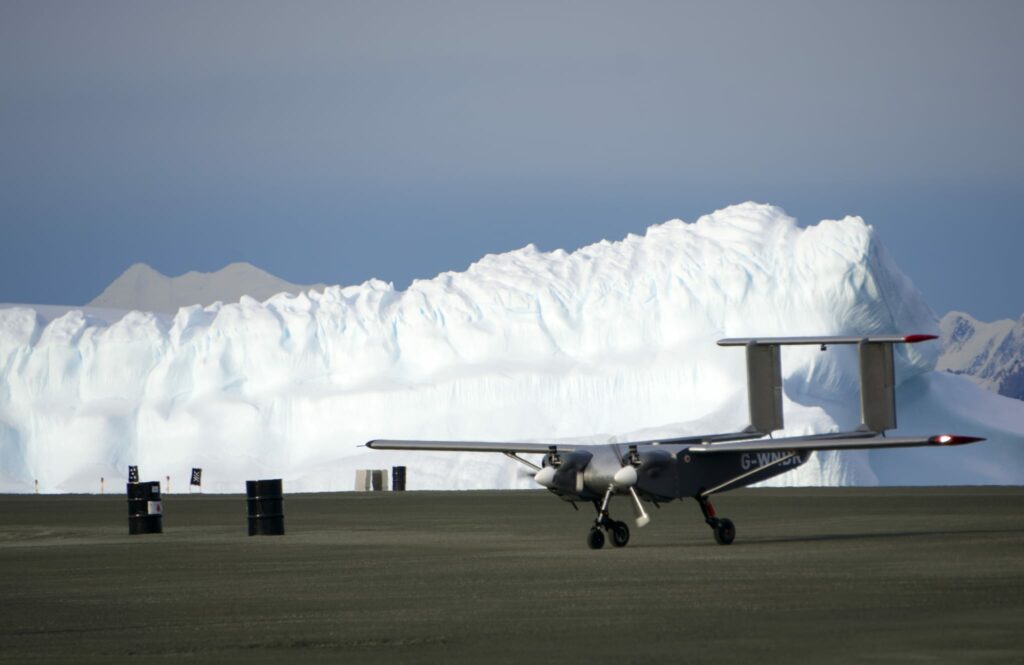eVTOL Insights: UK Windracers ULTRA Autonomous Drone “Flies over Antarctica”


A UK team recently arrived at Rothera Research Station in Antarctica to trial its new ULTRA Autonomous drone, reports a press release. The obvious question: Why is the team there after being best known for its successful medical delivery trials from England’s Southampton to the Isle of Wight back in 2020?
First, the drone is designed for extreme environments including very cold conditions. The ULTRA Unmanned Aerial Vehicle (UAV) is a fully autonomous, twin-engine, 10-metre fixed-winged aircraft, capable of carrying 100 kg of cargo or sensors up to 1000 km.
Second, if these trials are successful, ULTRA could represent a major addition to the British Antarctic Survey’s (BAS) scientific capabilities “offering the potential to do more science at a lower cost, with a lower carbon footprint than traditional crewed aviation,” says the release.
The UAV incorporates a high level of redundancy and can continue to fly even if one of the engines or components is damaged or fails. The craft also has been designed to be fixed in the field with a minimal number of parts.
For example, ULTRA can take off, fly and land safely with minimal ground operator oversight due to a sophisticated autopilot system called Masterless, developed and patented by Distributed Avionics. Alongside its lower-carbon impact than traditional crewed aviation, the UAV stands to play a key role in BAS plans to reach net zero by 2040.
These drones could be used as a primary tool for airborne scientific surveys, “making the most of the flexible configuration available in the platform for a range of scientific instruments,” continues the release.